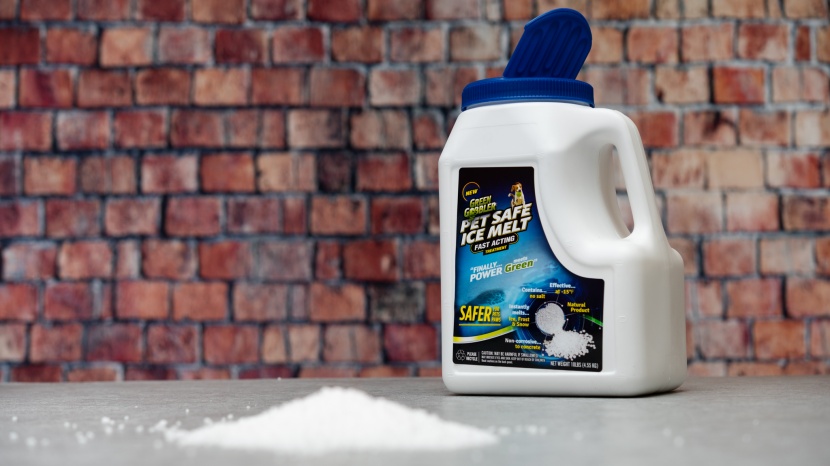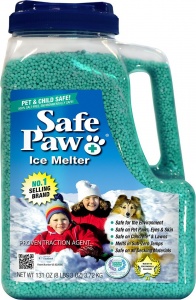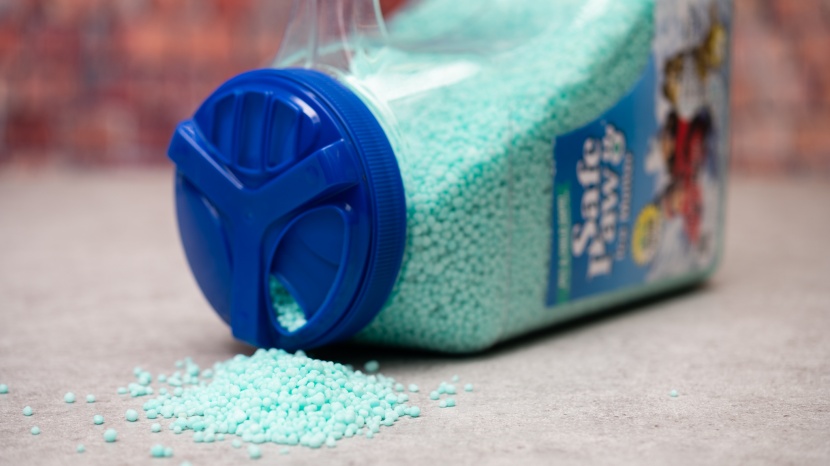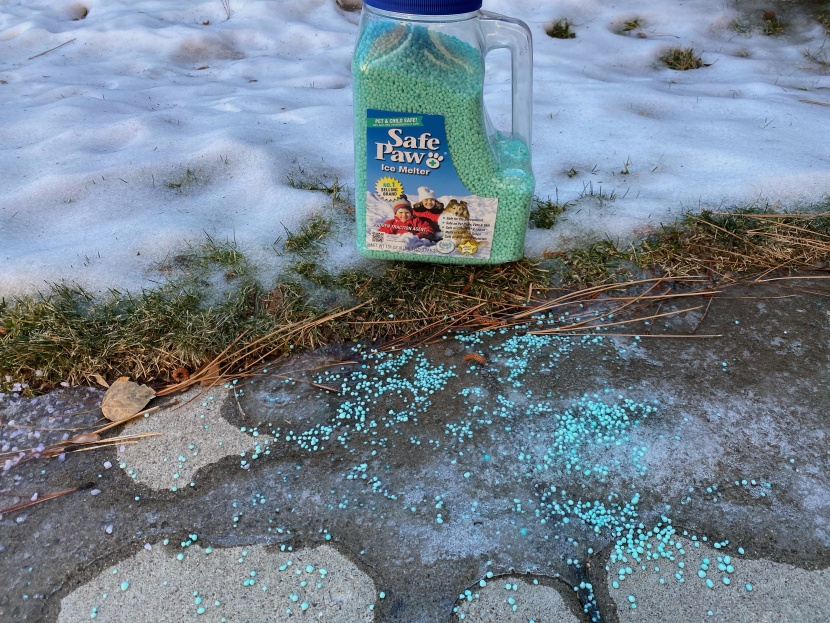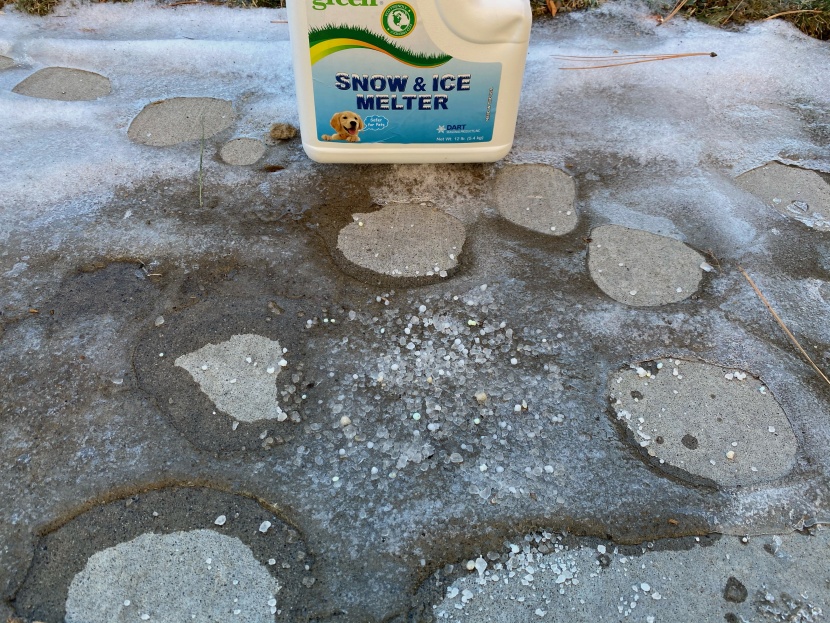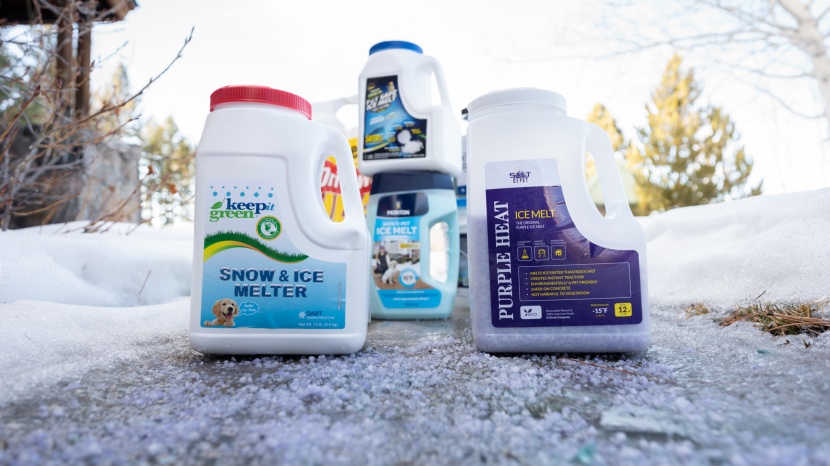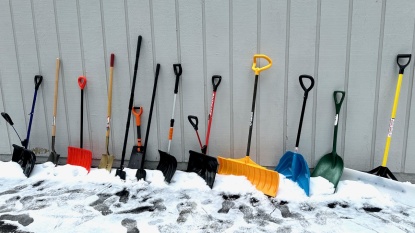Need a good ice breaker? We purchased and tested the best ice melt on the market, and our comprehensive review will provide you with all of the information necessary to pick your preferred brand the first time around. We assessed how chemical makeup affects melt time, each brand's minimum temperature ratings, and whether their chemical composition affects re-freezing. We also take into serious consideration concerns regarding pet safety, whether or not they can cause damage to surfaces, and any potential side effects on the environment. Our expert advice will help make your decision process easy, and you'll be spreading de-icer quicker than you can say Jack Frost.
Our home & garden experts want to help you make the most of your outdoor experience and help you enjoy the comforts of your yard or patio. Winter doesn't have to bring the fun to an end — break out a top-rated snow shovel to clean off your patio or porch, and bring some warmth to the season with one of outdoor heaters.
Our Top Picks
9 Best Ice Melts
If you want a fast-acting and effective de-icer, Prestone Driveway Heat is an easy choice. This product is extremely effective and poses very few concerns to flora, fauna, and concrete, making it easily the best de-icing product in its class. It is excellent for extreme cold weather (down to a constant -25º F), thanks to its calcium chloride formula, which creates an exothermic reaction when it comes into contact with moisture. Also, if you are trying to cover a larger area, the size of the grains works well in hand-crank seeders. In general, there is no major concern about damage to concrete with this product, especially if the concrete is over a year old.
While Driveway Heat is a clear leader in the class, there are some drawbacks to consider. The main concern with this product is the heat created in the calcium chloride reaction, which is generally enough heat to burn animal and human skin. While we don't intend to give the impression that this product is akin to napalm, this chemical reaction does warrant precaution, such as the use of gloves and keeping furry family members away. Also, we found the fine, white grains to be difficult to see, making it easier to accidentally over-apply the product. Still, the pros outweigh the cons, as long as you use the product with care, making it an easy choice when frost takes over.
Green Gobbler Pet Safe Ice Melt is fast-acting in conditions with temperatures as low as -5º F. The active ingredient, magnesium chloride, helps to prevent refreeze and, in contrast to calcium chloride, is considered to be better suited to concrete that is less than a year old. Additionally, this product poses less risk to pets and vegetation. Also, this product comes in a variety of sizes (10 - 50 lbs), so there's a package to suit the needs of users ranging from the hardened northerner to the fair-weather lowlander.
It's a fact that magnesium chloride is less harsh than calcium chloride, but, as a consequence, its exothermic reaction is not as energetic and, therefore, not as effective. This means the Green Gobbler Pet Safe Ice Melt must be used in greater quantities to perform the same amount of work. In such cases, a hand seeder is an optimal tool to evenly distribute de-icer across a surface. However, the Green Gobbler's fine grain is susceptible to clogging such tools. Still, this product is easy to clean up and less likely to agitate the skin of humans and animals when compared to calcium chloride.
As the name implies, Safe Paw Ice Melt has taken measures to decrease the risks posed to dogs — and animals in general — when the product is in use. This reduction in danger is mainly the result of the lower temperatures produced by the product. Case in point, the formula is only effective down to ~20º F, making it better suited to mild winter weather. Another feature of Safe Paw is its course, green-colored grains, which offer increased visibility to help limit overuse as well as a measure of traction to reduce the likelihood of slips and falls.
While Safe Paw is indeed better suited to households with pets scurrying around, it is less effective at melting ice. That's not to say that this product won't melt ice; it's just not as good at it as other products in this review. To be more specific, this product does little to prevent refreezing, and it's slow to work in the first place. What this means in a practical situation is that more of the compound will have to be applied more frequently. For the right user and climate, though, this product will be more than adequate.
Natural Rapport Pet Friendly Ice Melt is a blend of, among other things, calcium chloride and magnesium chloride. This combination helps to keep the price low while maintaining much of the reactive oomph of calcium chloride. Benefits include refreeze prevention, fast reaction time, and reduced application rates as compared to magnesium chloride alone.
As you may have deduced from reading between the lines above, the blending or diluting of the calcium chloride reduces the exothermic reaction. Thus, the blended formula is less useful in extremely cold situations, maxing out its effectiveness around -5º F. That said, this stuff is a good compromise if you're looking for affordability, reasonable reliability, and considerations for pets.
Green Gobbler Snow & Ice Melt Pellets is one heck of a product. It's great in super cold scenarios, particularly if you require fast melting action. This formula is good down to a teeth-chattering - 25º F. The awesome exothermic heat-producing reaction is long-lasting and requires less product than competing formulas. Given the presumed needs of a customer interested in such a powerful de-icer, it's nice that this product can reliably be scattered with a hand seeder or as a liquid spray when added to water.
As with other calcium chloride options, Green Gobbler is expensive. It isn't without some environmental concerns either. For starters, it is easy to over-apply it if you're not familiar with its use. Overspreading can lead to lawn damage and corrosion of concrete in certain scenarios. Furthermore, the high heat produced can cause skin irritation or worse. Despite these concerns, a well-informed user needing some serious de-icer will find this product quite effective and reasonably manageable.
Dart Keep It Green ice melt is a blend of sodium chloride, urea, calcium magnesium acetate, and a time-release fertilizer. While this ingredients list might have you feeling like you forgot to study for your chemistry exam, all you really need to know is that the main ingredient is rock salt. Rock salt has the benefit of being pretty fast-acting, and it adds grippy texture to slippery surfaces. Additionally, the Keep It Green formula is dyed green to increase visibility and limit overapplication.
Keep It Green is a better alternative to straight-up salt, but it is still a rock salt product that comes with all the risks and concerns you get with salt. First, it's corrosive, so you should avoid using it on driveways less than three years old. Rock salt also poses health risks to animals, including skin irritation, dehydration, vomiting, and, in extreme cases, death. Furthermore, it's basically poison for plants. The Dart blend lacks refreeze prevention properties and is only effective down to about 20º F, so it's functionally limited. Nevertheless, Keep It Green is a decent option when used in appropriate situations with the proper precautions.
Morton Safe-T-Pet Ice Melt is a decent de-icer that will reliably melt frozen water down to 20º F. It's also non-corrosive, which means it's safe to use on concrete of any age. As with many other formulas, this product is dyed to make it easier to spread evenly. Additionally, Morton adds a proprietary traction agent that adds a grippy texture between boot sole and frozen ground.
Safe-T-Pet Ice Melt is a reasonably effective product when used in mild winter climates. However, it is relatively slow to act, especially so when compared to products containing calcium chloride. Another consideration is that, while this formula is considered to be pet-safe, it shouldn't be over-applied or allowed to run off into waterways as it's particularly toxic to aquatic life when concentrated. That said, this product fits nicely into snow and ice removal kits for pet owners who infrequently experience harsh winter weather.
Snow Joe Melt-2-Go is a blended formula that includes sodium chloride and magnesium chloride. The advantage of the blend is that the salt concentration is reduced, and the magnesium chloride coating the salt is more expeditious for liquifying ice. This formula is effective down to 20º F and has been colored green to make it more visible and less likely to be overused. The coarse nature of the grains adds a measure of traction to slick walkways, a benefit that is unlikely to be scoffed at by denizens of inclement regions of the planet.
Despite the benefits of the Melt-2-Go formula, there are some concerns buyers should be aware of before deciding on this option. For example, the blend includes rock salt and all the problems associated with that expedient. Yes, rock salt is effective at reducing the freezing point of water, but at the cost of being corrosive to concrete and posing health concerns to plants and animals. Maintenance and safety issues aside, we think this ice melt offers decent effectiveness and manageable risks to the well-informed user.
Purple Heat Premium Snow and Ice Melt is essentially rock salt pellets that are covered with magnesium chloride and permeated with purple dye. The benefit of the coating and coloring is that it has a rapid though short-lived heating property as well as increased visibility that aids in even distribution of the product. Additionally, the uneven shape of the rock salt bites into ice and provides purchase for boot soles.
Unfortunately, rock salt poses several problems that can outweigh its benefits in some situations. For instance, pet owners should take precautions when using salt products because they pose significant health concerns to our furry friends. Salt is also bad for plants and corrosive to concrete that has not cured for at least three years. Another issue is the ability of salt to lower the freezing temperature of water is only effective to about 20º F. Considering everything, we think this ice melt falls into the meh category as there are much better options available.
Why Trust GearLab
Before making our selection, we dove deep into research on the best ice melts. After we were confident enough that we understood the market, we purchased all the products in this review for testing at full price. These products were evaluated side-by-side. First, the active ingredients were determined, and the products were sorted accordingly. Active ingredients (discussed in further detail below) demarcate appropriate usages, temperature ranges, and safety and environmental concerns. Next, each product was tested for effectiveness on the parking lot and walkways surrounding our lab. Throughout our testing, we took stock of the size, shape, and color of the product and how these characteristics contributed to effectiveness in the melting process and underfoot traction.
Senior Review Analyst Austin Palmer and Senior Review Editor Nick Miley have lived high in the Central Sierra Nevada for over two collective decades. This duo has seen the worst of what Old Man Winter can deliver when his frosty gaze settles on their stretch of the range. Complementing their personal experiences dealing with truss cracking ice dams and glaciated walkways is years of experimental testing both in the academic and private sectors. They know performance products because they have tested them in real-world scenarios and that knowledge is augmented with hard-nosed research on application and safety concerns.
Analysis and Test Results
Ice melt is a godsend when Jack Frost makes a visit to your home. However, the products falling under this moniker are not as uniform as a casual glance would suggest. Rather, they come in a wide range of application-specific formulas. While we can't shovel snow and chip ice for you, we can help you pick the right product to help you out. To that end, this review sorts the products by active ingredient while at the same time outlining their best use. For clarity, our analysis is split into four sections — chemical make-up, effective temperature, environmental concerns as well as physical characteristics — that examine every aspect of use.
Important Note
Many manufacturers warn not to use their products on concrete less than a year old. In some cases, the concrete needs to be well established (up to 7 years old). Additionally, many de-icers can harm plants, animals, and a variety of surface materials. We try to cover each product's restrictions. However, users should always read the manufacturer's directions before use.
Chemical Make-Up
The chemical make-up metric is a sorting of the products according to their active ingredients. Knowing the chemicals and how they get frozen water to melt will simplify the selection process. Perhaps the most well-known de-icer is sodium chloride, better known as rock salt. Salt mixed with liquid water effectively lowers the water's freezing point by preventing water crystals from forming. Products such as Dart Keep It Green or Snow Joe Melt-2-Go contain sodium chloride. As will be discussed in more detail below, the thawing effect of salt is relatively limited.
On the other end of the de-icing spectrum is calcium chloride. This chemical absorbs moisture from its surroundings triggering a rapid exothermic reaction which yields heat up to 120º F. The Prestone Driveway Heat and Green Gobbler Snow & Ice Melt Pellets use this chemical. Much like calcium chloride, magnesium chloride reacts to water and produces heat. However, the reaction is slow and produces temperatures in the 75º - 90º F range.
Other active ingredients include urea, which, like salt, prevents water molecules from organizing into crystals and lowers the freezing point. Products such as Safe Paw Ice Melt and Morton Safe-T-Pet Ice Melt use urea though it is less effective than salt. It should be noted that many products use a mix of these ingredients — as well as others such as calcium magnesium acetate — to keep costs low, increase effectiveness, and minimize negative side effects.
Temperature
The temperature metric is an analysis of the products' minimum temperature ratings. Additionally, the metric looks at melting time and longevity (i.e., in situ refreeze prevention). Prestone Driveway Heat and Green Gobbler Snow & Ice Melt Pellets lead the class in all three of these categories. These de-icers' prowess is the product of their main ingredient — calcium chloride. Our investigation revealed that these compounds remain effective down to -25º F. Moreover, these de-icers kick off almost immediately, stay hot longer, and help to limit refreezing while in place.
Following calcium chloride in order of effective minimum temperatures are magnesium chloride (~0º F), sodium chloride (~20º F), and Urea (~25º F). Despite being a step down from calcium chloride, magnesium chloride is fast-acting, produces relatively high temperatures when exposed to moisture, and limits refreezing. Green Gobbler Pet Safe Ice Melt uses unblended magnesium chloride. Both Natural Rapport Pet Safe Ice Melt and Snow Joe Melt-2-Go use a blend of sodium chloride and magnesium chloride as the latter helps to lower the prior's relatively high minimum effective temperature rating, slow working time, and lack of refreeze deterrence. Urea is the least effective active ingredient of the bunch. It is frequently used in blends; however, Safe Paw Ice Melt uses an unblended formula.
Environment
The environment metric looks at the surfaces that the de-icers in this review are best suited to. Specifically, we want to know if they have the potential to damage concrete and other surfaces, such as tile. We also want to know if there are risks to pets and vegetation. Let's start with the latter first. Products such as Safe Paw and Morton Safe-T-Pet Ice Melt pose the least risk to animals as their active ingredient, urea, does not pose the same dehydration, skin irritation, and gut issues as sodium chloride. Nor does urea pose a risk of burning the skin, as do products continuing calcium chloride and magnesium chloride.
When it comes to concrete corrosion, sodium chloride (salt) products pose the greatest risk. These risks decrease with the age of concrete. So, if you plan to use products like Dart Keep It Green or Snow Joe Melt-2-Go on a concrete driveway or patio, make sure that the concrete is over three years old. Likewise, magnesium chloride will damage tile, granite, and limestone if not removed after the ice has melted. As for lawns and other plants, products containing either salt or urea will prove toxic if used excessively.
Size, Shape, and Color
As the metric title suggests, this portion of our analysis looks at the pros and cons related to the size, shape, and color of the product. These characteristics are certainly secondary to the issues discussed in the temperature and environment sections. However, size, shape, and color are nonetheless important to consider. Many of these products are dyed to make them more visible, which helps to prevent overuse. Safe Paw, for example, dyes their product green. Unfortunately, expensive and potentially harmful products like Prestone Driveway Heat and Green Gobbler Pet Safe are white and blend in with the ice and snow.
Our size analysis focuses on whether or not the product will clog a hand seeder. For those of you unfamiliar with this tool, a hand spreader is just a handheld funnel atop a hand-cranked wheel that throws seed, or in this case, de-icer, over a surface. It's a great way to get an even distribution of the product across a large area. Fine-grain products such as Prestone Driveway Heat and Green Gobbler Snow & Ice Melt Pellets work great with these machines. The irregular shape of these fine grains also helps them to stay put on an incline.
Some products are shaped into pellets, a shape that does a good job of penetrating ice and working from below but poses the problem of rolling downhill if the surface is firm. Safe Paw and Natural Rapport are examples of products that come in pellet form. Finally, products like Dart Keep It Green and Snow Joe Melt-2-Go that use sodium chloride provide an added measure of traction to slippery surfaces because the salt's angular edges bite into frozen surfaces and add texture.
Conclusion
This hands-on review of ice melt covers everything from the active ingredients and melt-inducing properties to minimum effective temperature and safety concerns. Our comparative analysis makes it easy to select the right product for your particular situation. While this review is no substitute for a helping hand with your ice removal, it will go a long way to speed up the work that lies ahead.
—Nick Miley and Austin Palmer















